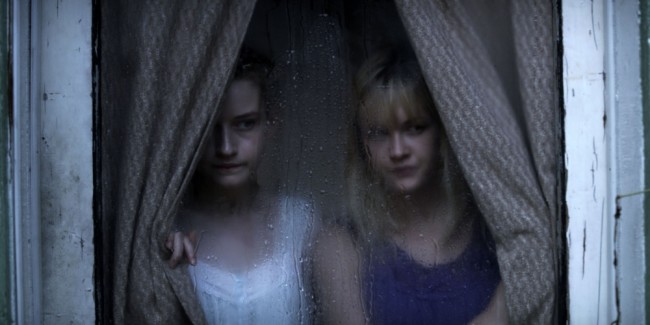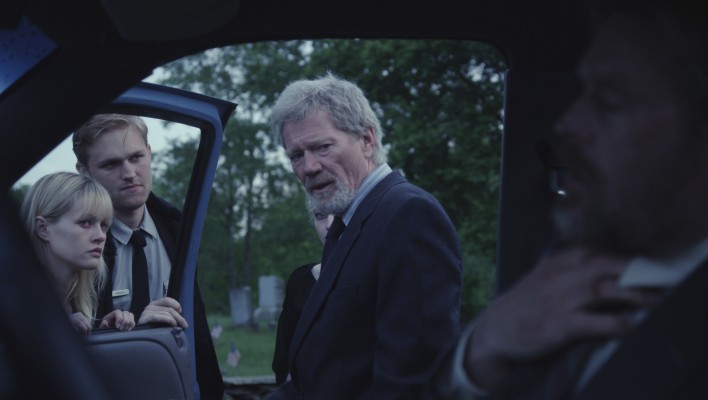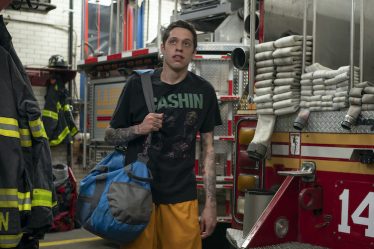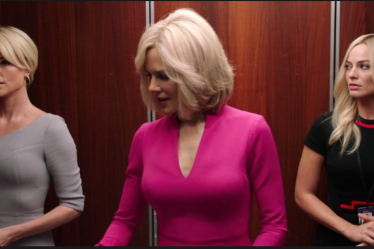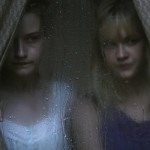
October 10, 2013
Halloween is coming. What to see? Often this time of year, Hollywood studios roll out movies that could have been bested by one created by a basement-dwelling yet creative 16 year old. Even though it means seeking them out in fewer theaters, how refreshing that in recent years, indie made movies have come to save the holiday!
Case in point: We Are What We Are, by lightning hot, up-and-coming director Jim Mickle. This movie, which uses the 2010 film of the same name (Somos Lo Que Hay) as more of a jumping off point or distant cousin, than a blueprint, successfully permeates the theater with gothic dread and a palpable sense of impending doom through its 100-minute running time, all the way to its shocking, satisfying end. Spare yet effective gore churns the stomach just enough to turn non-horror fans running, which is as it should be.
A deluge is coming to the Parkers’ small town, and before it even gets underway, the matriarch of the family is found dead. Mom was handed down, through generations, a key role in a secret ritual that must be done to keep their centuries-long traditions going. That means the two daughters of iron-fisted preacher Frank are expected to assume responsibilities unique to their family… They eat people.
Don’t expect Cannibal Holocaust. This is not a high gore, Texas Chainsaw kind of affair. This flick sits far more in the camp of gothic suspense, punctuated by moments where blood spurts or a terrified victim struggles in vain. It gets red and juicy just often enough for the folks in sound effects get to take the “stomach churning challenge”.
The rural location, which uses the Catskills mountains as a backdrop, provides optimal opportunity for cinematographer Ryan Samul to build an environment that feels both remote and ancient, as if this family lives outside of time.
This 2013 release is modeled after the 2010 film by director Jorge Michel Grau, which is metaphoric for political disfunction, socialism verses capitalism, and social inequities in Mexico. When Mickle was offered the opportunity to remake the film, instead of recreating the original, he chose to frame his version as if the two were about connected families with a similar story.
In doing so, he picks the most delicious parts off its skeleton and creates a tasty new melange made with oppressive religiosity, skewed morality, and archetypal good and evil, using two sisters coming to the age of consent, and choosing to stay or break away from the rules and rituals that dominate their past.
Bill Sage plays the family patriarch, and he is one bad dude. Even through grieving for his lost wife, he is the poster man for the destructive nature of fundamentalism, or certainly the internal skewing of the same by those compelled or driven by their own evil. The movie asks which comes first, and it is up to the viewer to decide. It seems, however, that he is cloaking his bad-to-the-bone nature in his preacher’s suit, a suit which looks copied detail for detail from Robert Mitchum’s preacher Harry Powell from 1955’s The Night of the Hunter. His villainous deeper workings seem to mirror Powell’s as well. These characters cause the same question to bubble forth: where does misguidedly following tradition and scripture end and rationalized evil begin? Sage gives both perceptions equal weight, and in so doing makes the character watchable and compelling.
As the daughters Rose and Iris, Julia Garner and Ambyr Childers make believable the idea that teenage girls could be raised in such a profoundly controlled cocoon that outside forces like public high school don’t influence them. The death of their mother serves as a catalyst and becomes the crossroads for rejecting or choosing to embrace their parents’ beliefs and traditions. They must do so for themselves as individuals responsible for their own actions, beyond what has been expected of them through childhood. They live struggling with the mix of terror and respect, love and repulsion. As all these mingled emotions are played with authenticity, we come to believe in the ultimate outcome from such oppression, whatever it might be.
As Doc Barrow, vastly underrated veteran method actor Michael Parks is a study in the effects of long term grief, showing a controlled internal suffering with nuance and barely perceptible micro movements that is a marvel to watch. It’s true that twisted religion as thematic use in horror has been done before, but connectivity and interaction between the actors working together make up for lapses in originality. There is also a flow to the film as a whole that brings together the rural visual tapestry and the morphing of these complex relationships to make a movie that feels new, fresh, and ultimately, cathartic.
Cinema Siren sat down with director Jim Mickle to talk about his work and the making of We Are What We Are. Catch it below:
If the theater playing We Are What We Are is too far away, don’t despair! Cinema Siren has asked a friend, horror movie expert Dustin Putman, to guest on Cinema Siren this week and offer up 10 top heroines from his new book The Fright Files. Click here for that article.





